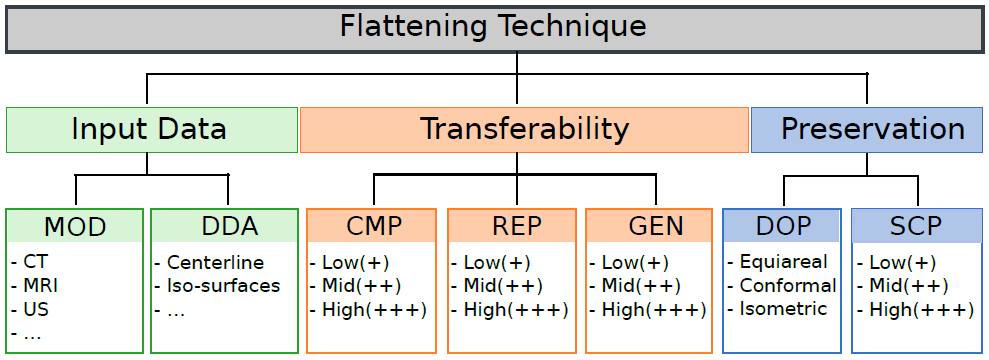A Survey of Flattening-Based Medical Visualization Techniques
Computer Graphics Forum 2018
Abstract
In many areas of medicine, visualization research can help with task simplification, abstraction or complexity reduction. A common visualization approach is to facilitate parameterization techniques which flatten a usually 3D object into a 2D plane. Within this state of the art report (STAR), we review such techniques used in medical visualization and investigate how they can be classified with respect to the handled data and the underlying tasks. Many of these techniques are inspired by mesh parameterization algorithms which help to project a triangulation in R3 to a simpler domain in R2. It is often claimed that this makes complex structures easier to understand and compare by humans and machines. Within this STAR we review such flattening techniques which have been developed for the analysis of the following medical entities: the circulation system, the colon, the brain, tumors, and bones. For each of these five application scenarios, we have analyzed the tasks and requirements, and classified the reviewed techniques with respect to a developed coding system. Furthermore, we present guidelines for the future development of flattening techniques in these areas.
BibTeX
@article{kreiser18medproj,
title={A Survey of Flattening-Based Medical Visualization Techniques},
author={Kreiser, Julian and Meuschke, Monique and Mistelbauer, Gabriel and Preim, Bernhard and Ropinski, Timo},
year={2018},
journal={Computer Graphics Forum},
volume={37},
pages={597--624},
issue={3},
doi={10.1111/cgf.13445}
}

